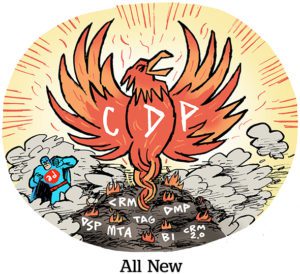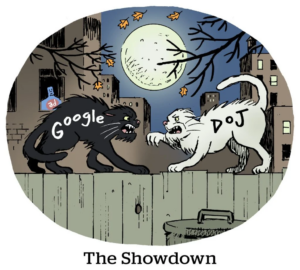“Data-Driven Thinking” is written by members of the media community and contains fresh ideas on the digital revolution in media.
Today’s column is written by Maja Milicevic, co-founder and principal at Sparrow Advisers.
If you want to make an ad tech professional laugh, ask them about the resilience of advertising networks. While some may openly joke at the networks’ expense, they’re really hinting at another underlying industry truth: Most things in ad tech are cyclical, and it’s important to understand which part of the cycle you’re in.
This holds particularly well for programmatic, which appears to operate in roughly seven-year cycles. If programmatic had a formal birthday it would most likely be the founding of Right Media in 2003, putting us squarely in its third epoch. In 2020, Zenith estimates nearly 70% of all global digital advertising will be bought through programmatic means.
But it hasn’t always been a smooth ride – and the journey may yet become rougher. With the upcoming deprecation of third-party cookies, marketers must reevaluate the customer experiences they are delivering. They must also rethink how the technology should work and develop a fundamental understanding of how they are connected to other critical infrastructure players.
Three epochs
In programmatic’s first epoch (2003-2010), digital was considered a minor, less relevant part of media businesses. Publishers, especially premium publishers, mostly sold direct and thought remnant inventory wasn’t worth the effort until technology facilitated a seemingly less laborious transaction. New revenue from previously unmonetizabele inventory gave rise to independent, digital-first businesses. Tech investment grew, along with signs of consolidation and strategic interest, capped by Google’s 2010 purchase of Invite Media.
Programmatic’s next seven years felt like the Wild West. As it grew, publisher sales forces reorganized. Many publishers initially cannibalized direct sales, with programmatic competing for impressions. Programmatic remained siloed and narrowly focused on short-term performance metrics. Programmatic leaders were only versed in programmatic and seldom understood the rest of their businesses well, and vice versa for other business unit leaders. Ad fraud emerged and proliferated.
Today’s third epoch is characterized by a shift toward maturity and stability. It is being defined by checks and balances: the adoption of GDPR in Europe and subsequent rollout of state-level privacy regulations in the United States. While overall programmatic spend continues to grow by double digits, it is largely collected by the three largest advertising platforms, effectively continuing the decimation of formerly strong local media ecosystems and the devaluation of content. Now it appears that the upcoming deprecation of third-party cookies will further tilt the scales in favor of walled gardens.
Keys to thriving in the third epoch
First, Google’s third-party cookie deprecation announcement provides the impetus for everyone to rethink how the technology layer should work. Much of this space has evolved over time, with point solutions emerging to address gaps in earlier tech. If we had the luxury to design the tech layer today from scratch it would likely look quite different. Evaluating who’s in your tech (and partner) stack and your data strategy is the next best thing to rebuilding everything from the foundations up, and it’s a good project to kick off this year.
Second, advertisers must stop thinking at the impression level and instead consider a more holistic customer experience. If I’m watching a 30-minute show, playing the same 30-second ad during every commercial pod is only driving user aggravation, not brand recall and certainly not the reach-frequency calculation. A particularly egregious class of offenders are retargeting ads for products you’ve already bought. Brands have an opportunity to reconsider everything from media-mix modeling to attribution with the full understanding that sometimes not serving an ad and not winning an auction are the better way to go.
Finally, it’s time to think of programmatic not as some novelty item but as a core execution layer. It’s really shaping up to be the Excel of advertising: It covers a lot of different scenarios and use cases, and if it somehow disappeared for a day many people wouldn’t be able to do their jobs. Programmatic is an infrastructure play, and understanding who is in your infrastructure – for example, by exploring supply- and demand-path optimization – and how different players interconnect is critical to commercial success.
So fair winds and following seas to all. May we weather programmatic’s third epoch and lay the foundation for the fourth, due to arrive in 2025.













